The World Heritage site, one of the greatest Buddhist centers in Japan, to offer you relief from the stress of everyday life in the peaceful site with over 100 temples and rich nature.
Koyasan, surrounded by 1000m-high mountains, and located in Wakayama prefecture is the center of Shingon Buddhism which was introduced to Japan in 806 by Kobo Daishi (also known as Kukai). He is one of Japan’s most significant religious figures. Kobo Daishi founded the sect’s headquarters on the mountaintop in 816. Then It has flourished as a sacred town with over one hundred temples for over 1,200 years. Also Koyasan is the site of his mausoleum and the start and end point of the Shikoku 88 Temple Pilgrimage routes.
In 2004, Koyasan is designated the UNESCO world heritage site along with Kumano Sanzan, and Yoshino and Omine, as the connecting pilgrimage routes to the ancient capitals of Kyoto and Nara.
Features
Koyasan let you explore some 1,200 years of history.
Firstly, the 25-meter high Daimon Gate welcomes worshippers and visitors into the World Heritage site, with over 100 temples scattered throughout the grounds. The most important among them are Kongobu-ji, the head temple of Shingon Buddhism, Danjo Garan Sacred Temple Complex, the center of Koyasan, and Okuno-in, the site of Kobo Daishi’s mausoleum.
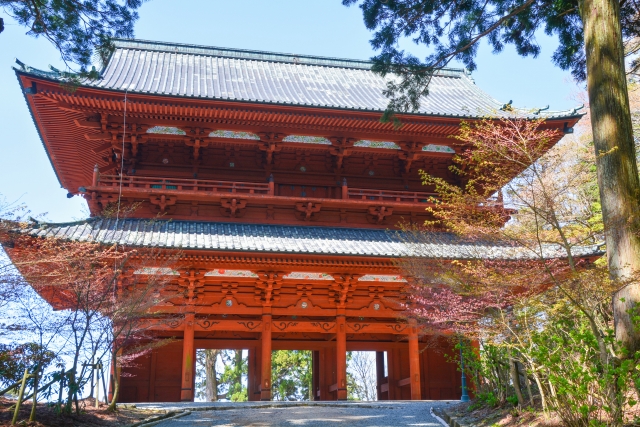
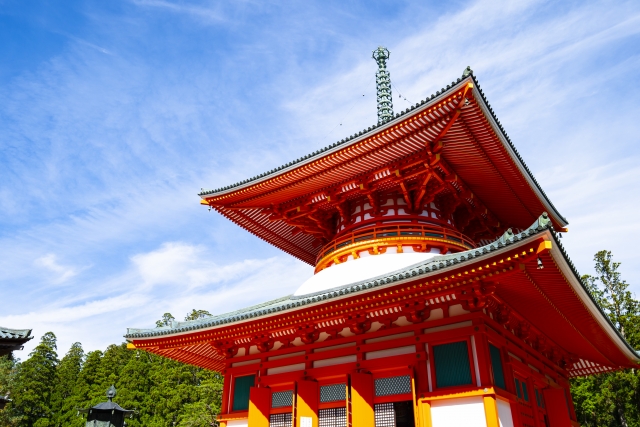
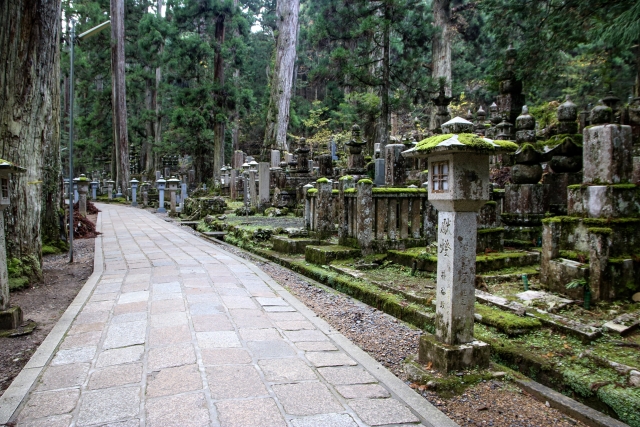
Kongobu-ji Temple
As the head temple of Shingon Buddhism, Kongobu-ji Temple is the most prominent structure at Koyasan. A place where more than a million pilgrims and worshippers gather to celebrate the memory of Kobo Daishi (774-835). The Temple was first built in 816, and was destroyed and rebuilt several times over the years. Kongobu-ji features beautiful painted sliding doors of seasonal flowers and birds from 16th century, as well as Banryu–tei, Japan’s largest rock garden, a composition of one hundred and forty blocks of granite depicting two dragons emerging from a sea of clouds to protect the sanctuary. You can also see the traditional fire prevention system of barrels on the cypress bark roofing.

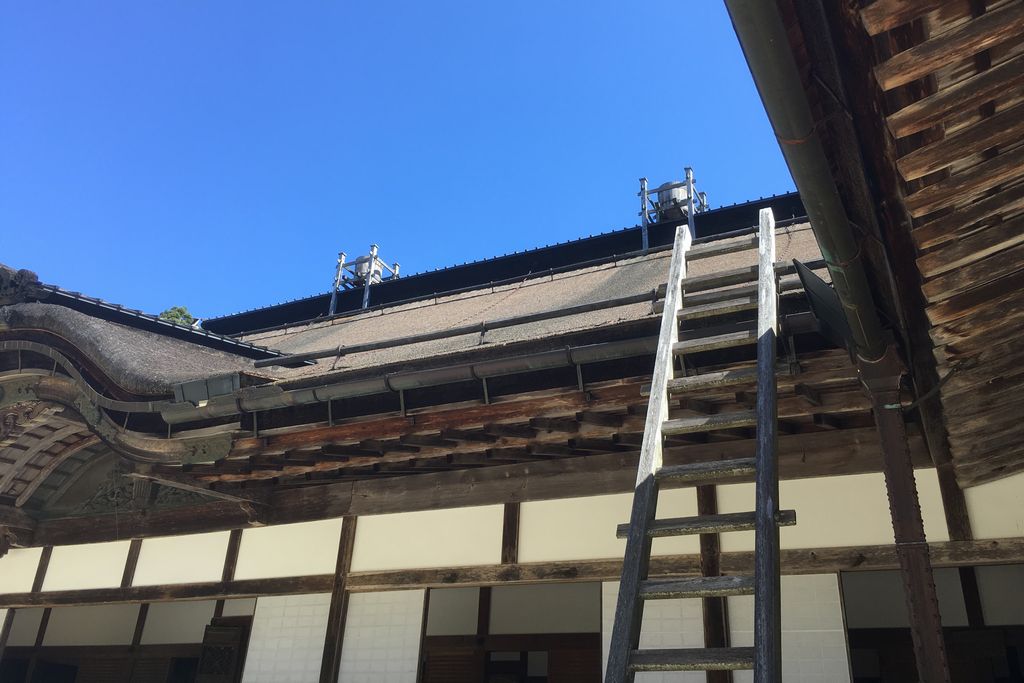
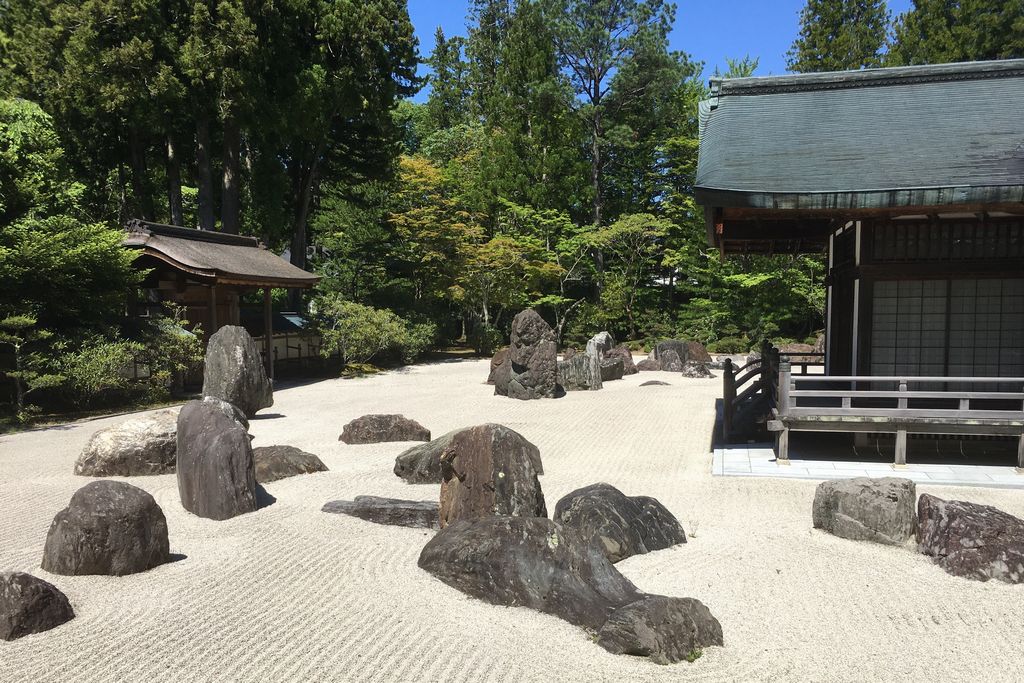
Danjo Garan Sacred Temple Complex
The Danjo Garan Sacred Temple Complex can be described as the center of Koyasan. It was opened by Kobo Daishi as a place for secret training in Shingon esoteric Buddhism. This vast and quiet complex is filled with many religious structures, both Buddhism and Shinto.
The brightly colored 45-meter tall pagoda, Konpon Dai-to stands out as one of the most impressive building in the complex. It houses a statue of Dainichi Nyorai, the central Bodhisattva of the Shingon sect. The main pavilion, Kon–do which enshrines a statue of Yakushi Nyorai, the Buddha of healing and medicine. Major religious ceremonies are held in this large wooden hall.
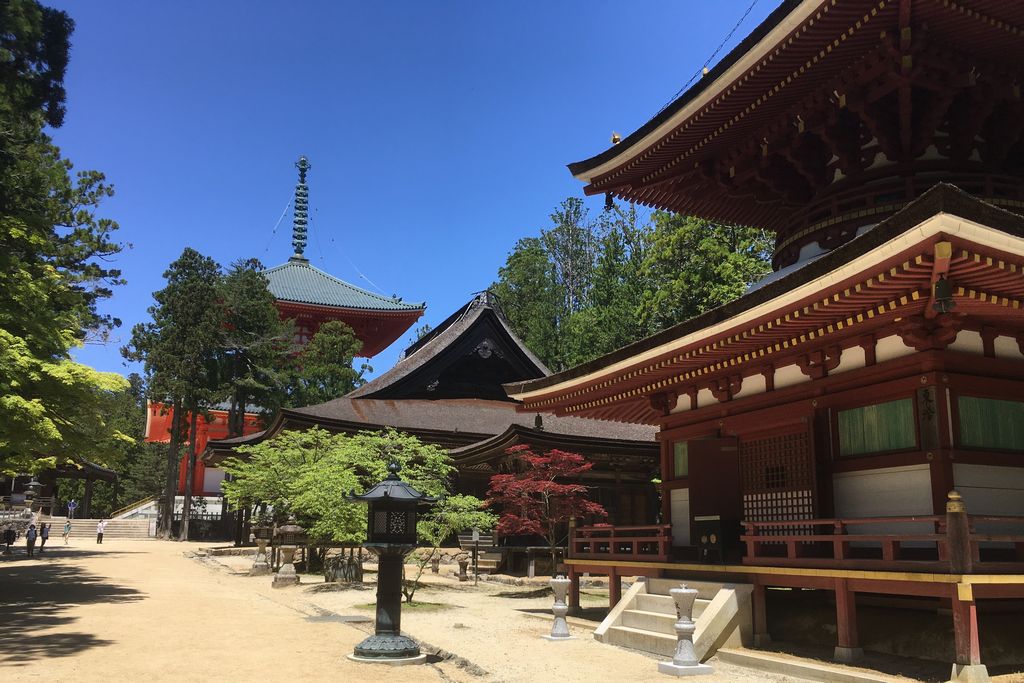
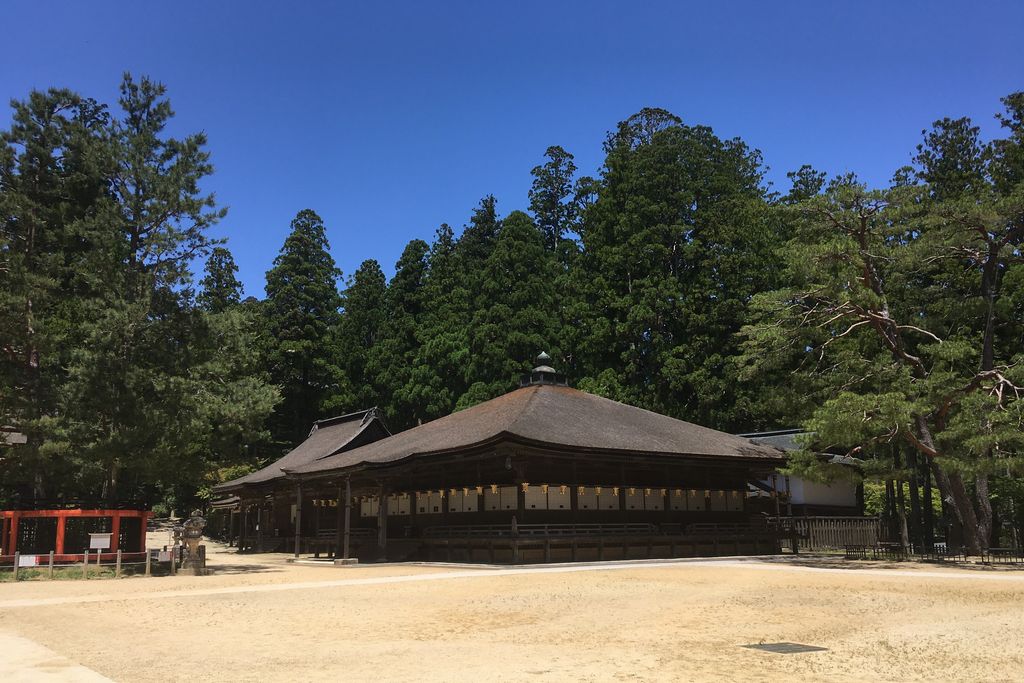

The great portrait hall, Mie-do which contains a portrait of Kobo Daishi. Mie-do was once the spot reserved for Kobo Daishi’s private meditations. Visitors are only allowed to admire the portrait once a year on 21 March, the date of the Kyusho Mieku Festival. Equally important, Sanko no Matsu, pine tree stands in front of Mie-do. It has been said that Kobo Daishi’s trident hurled from China towards Japan and landed on this tree, leading him to the perfect place for his monastery.
Okuno-in Temple
Okuno-in Temple is the most important place in Koyasan where the site of Kobo Daishi’s eternal meditation is. The approximately 2-kilometer cobbled path from Ichi no hashi bridge leads to the mausoleum of Kobo Daishi.
Ichi no hashi bridge is like a dividing line between two worlds. After crossing the bridge, the atmosphere is different, the air is changed with the sacred. It feels like a glimpse of the afterlife. Over 200,000 mossy gravestones and Buddhist memorials including famous samurai loads have been lined along the ancient cedar trees. Kobo Daishi’s Mausoleum is behind Toro-do hall at the end of the path. Worshippers and visitors come from all over to pray to Kobo Daishi.
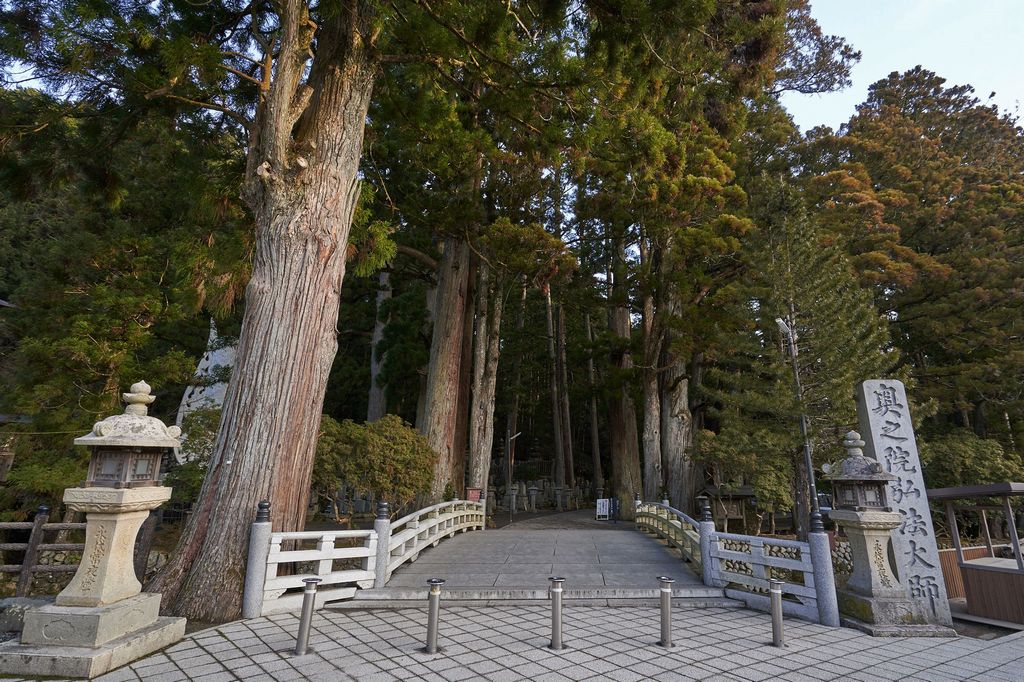
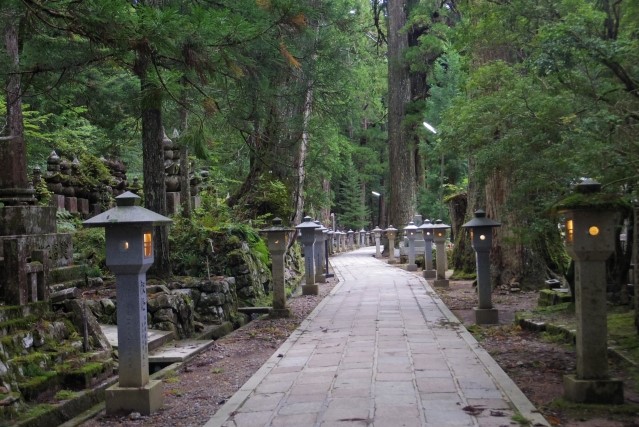
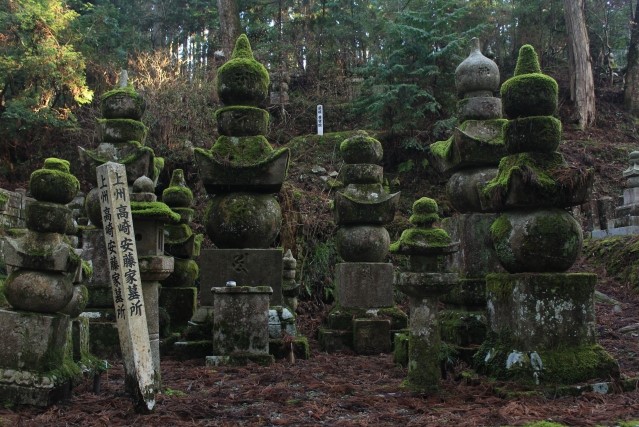
Furthermore, you can visit Okuno-in and stroll all the way to the mausoleum in the dark of the night. I’d say that you can feel more spiritual atmosphere that is quite different from a day time visit. The path is poorly lit up with stone lanterns.
Shuku-bo, Temple lodging
Indeed Koyasan is one of the best places to experience an overnight stay at one of the over 50 temple lodgings where you can experience a monk’s lifestyle. You can taste shojin ryori, a vegetarian Buddhist cuisine made entirely of vegetables. In addition you can take part in some of the monk’s spiritual practices, such as meditation and copying sutras. When it comes to the many options you have for a Koyasan temple lodging, Eiko-in Temple is the most popular option. it is situated at the center of Koyasan, and the staff speaks very good English.
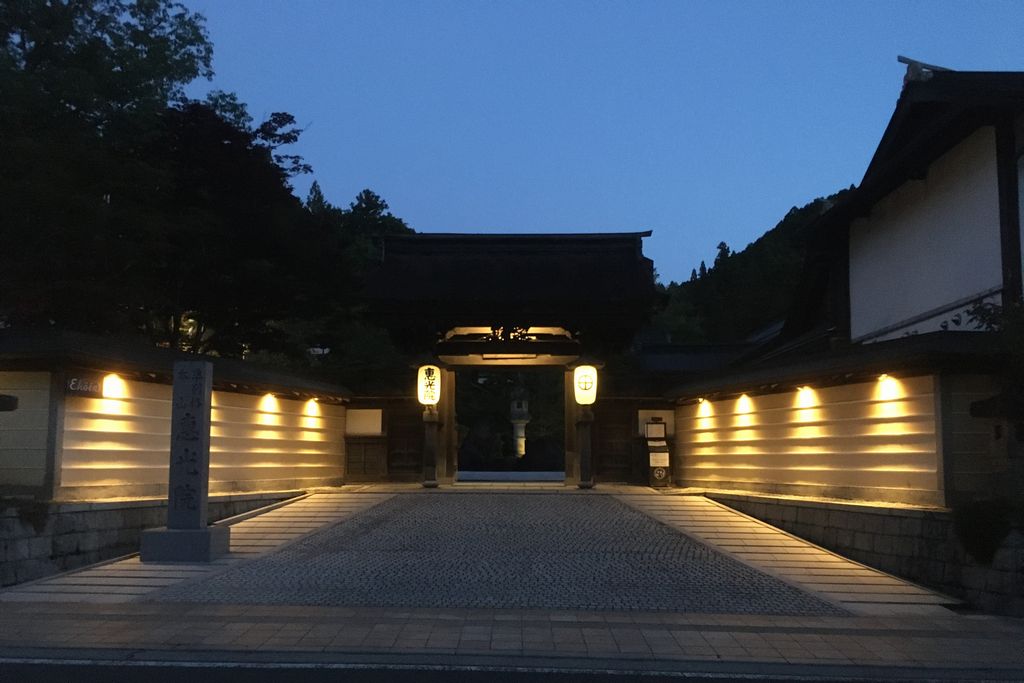


Pilgrimage Routes
In fact, Koyasan was the end of a long journey along the Kumano Kodo pilgrimage route, which you can still walk. The Koyasan Cho-ishi Michi Pilgrimage Route, built at the same time as Koyasan. This trail (24 km, 7-hours) begins at Jison-in Temple on the foot of Koyasan and ends at Koyasan’s Daimon entrance gate. Alternatively, you can take the short trail (2.5 km, 1-hour), which is well made and easy to walk and follow from Gokurakubashi station to Koyasan known as Fudozaka.
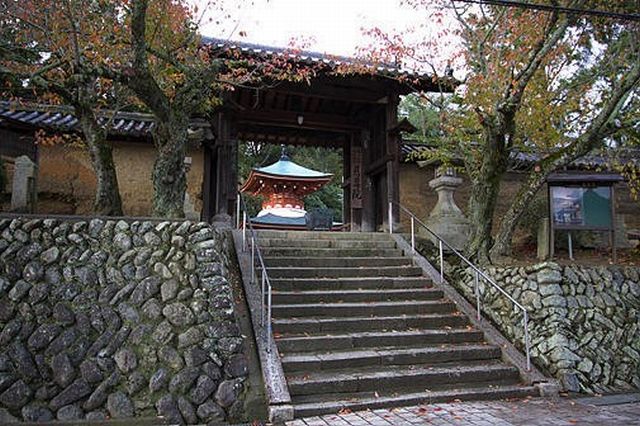
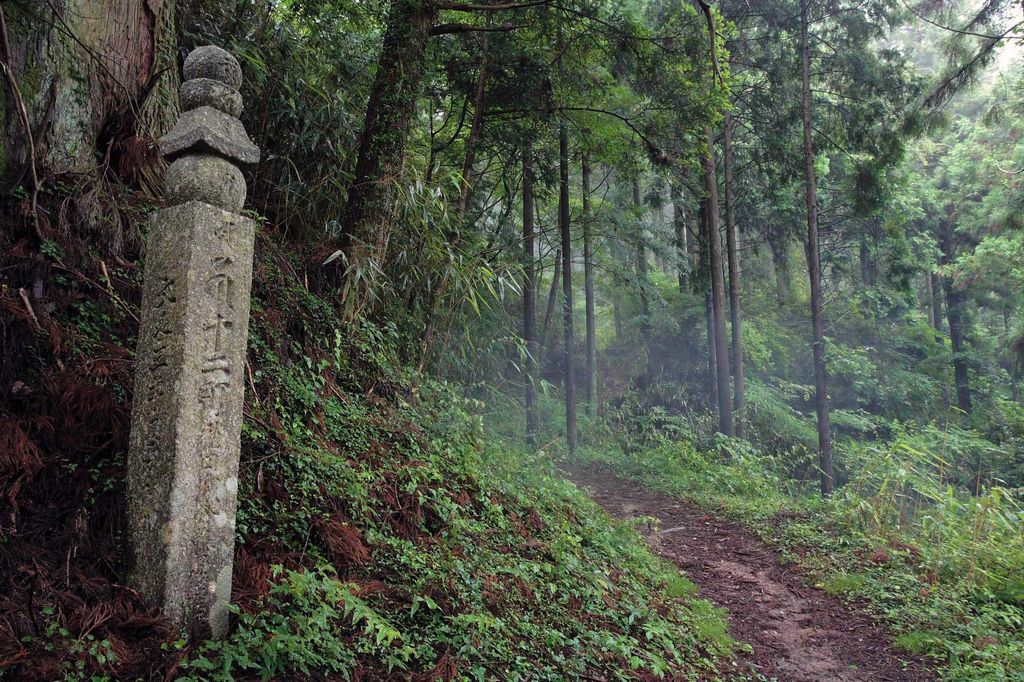

From Osaka, Namba station : Take the Nankai Koya line for the 90-minute ride to Gokuraku-bashi station and a five-minute cable car up to Koyasan. Koyasan is also accessible by train and bus from Wakayama, Osaka, and Nara.
In Koyasan Town : The town is serviced by buses, you can get a 1-day pass at Koyasan station.